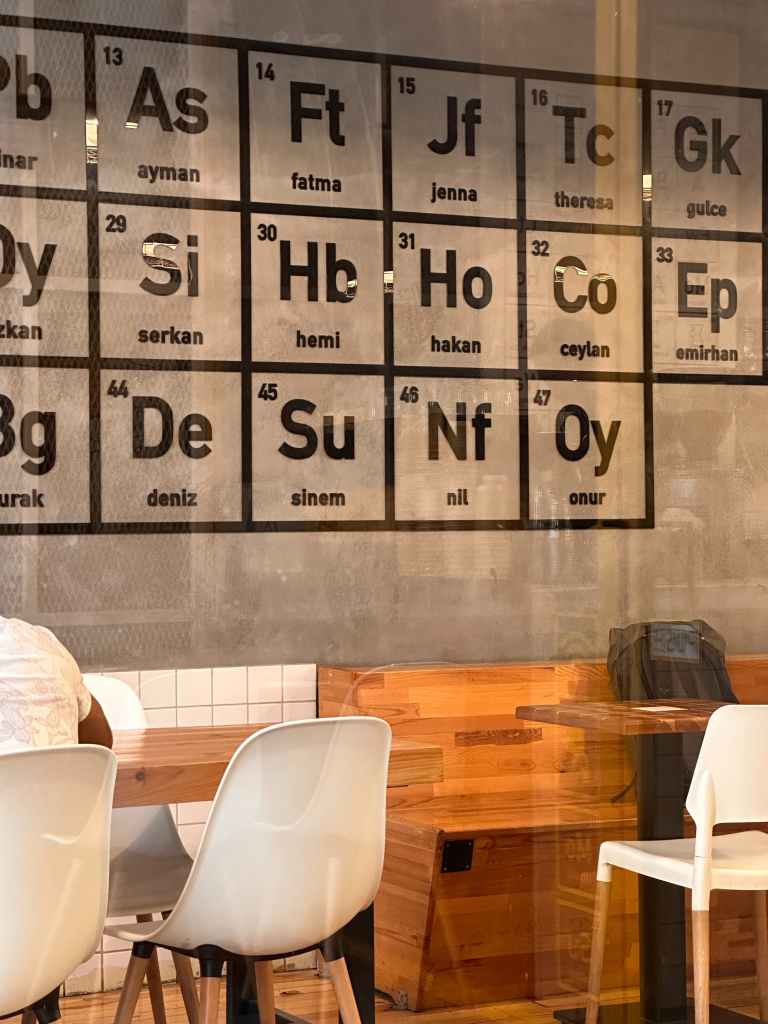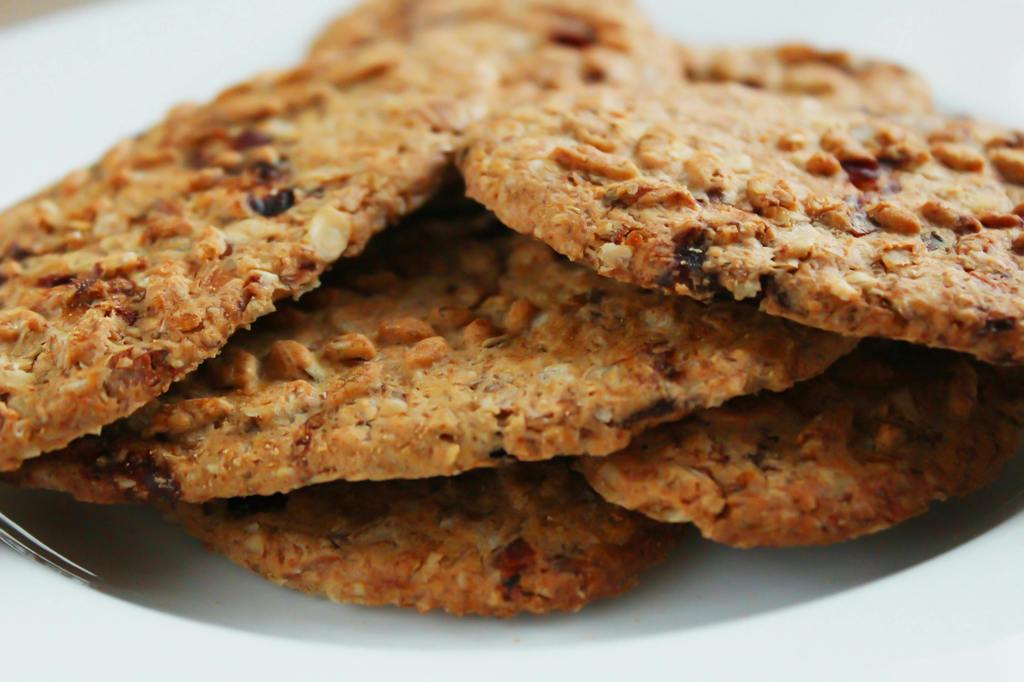I often get asked, “What is the difference between baking powder and baking soda?” I thought this would be a good informative blog post for all my followers! So lets dive into this topic. Keep posted for an explanation on what the difference is between liquid and solid measuring cups as well!
In the world of baking, there are two key ingredients that often get confused: baking powder and baking soda. Both are commonly found in our kitchen cabinets, but what exactly are their differences and how do they affect our baked goods? Let’s unravel the mystery behind these kitchen staples.
Baking powder and baking soda may look similar, but they function differently in recipes. Baking soda is a pure chemical compound known as sodium bicarbonate, which, when combined with acidic ingredients like vinegar or buttermilk, creates carbon dioxide bubbles. This reaction helps dough to rise, resulting in fluffy and light-textured baked goods.

On the other hand, baking powder is a mixture of baking soda, an acid, and a stabilizer like cornstarch. It already contains the acidic component needed for the carbon dioxide release, eliminating the need for additional acidic ingredients. This makes baking powder a great choice for recipes that do not include acidic ingredients.
Understanding the difference between these two leavening agents is crucial for achieving the desired results in your baking creations. So next time you’re in the kitchen, confidently reach for either baking powder or baking soda, knowing that you have the right ingredient in hand for that perfect rise.
What is baking powder?
Baking powder is a leavening agent commonly used in baking to help dough rise and create a light and fluffy texture in baked goods. It is a mixture of several ingredients, including baking soda, an acid (such as cream of tartar), and a stabilizer (often cornstarch). These ingredients are carefully combined to create a balanced reaction when exposed to heat and moisture.
When baking powder is added to a recipe, the heat in the oven causes the acid and baking soda to react, releasing carbon dioxide gas. This gas forms bubbles in the dough, causing it to rise. The stabilizer in baking powder helps to keep the reaction stable and prevent premature release of carbon dioxide. Overall, baking powder is a convenient option because it already contains the necessary components for a successful rise, eliminating the need for additional acidic ingredients.
What is baking soda?
Baking soda, also known as sodium bicarbonate, is a pure chemical compound that is commonly used as a leavening agent in baking. It is a versatile ingredient that reacts with acidic components in recipes to produce carbon dioxide gas, which causes dough to rise.

Join the list
Join hundreds of our subscribers and be the first to know about new content and special offers.
Unlike baking powder, which is a pre-mixed leavening agent, baking soda needs an acidic ingredient to activate its leavening properties. Common acidic ingredients used in combination with baking soda include vinegar, lemon juice, and buttermilk. When baking soda and an acid come into contact with moisture and heat, a chemical reaction occurs, resulting in the release of carbon dioxide bubbles. These bubbles create air pockets in the dough, causing it to expand and rise.

Baking soda is also commonly used as a household cleaning agent and odor neutralizer due to its alkaline properties. However, it is important to note that the baking soda used for baking should be separate from the one used for cleaning, as they may not be of the same quality or purity.
Chemical differences between baking powder and baking soda
While baking powder and baking soda may look similar, they have distinct chemical differences that affect their functionality in baking.
Baking soda, or sodium bicarbonate (NaHCO₃), is a pure compound that is alkaline in nature. It is a base that reacts with acids to produce carbon dioxide gas. When baking soda is combined with an acidic ingredient in a recipe, such as vinegar or lemon juice, a chemical reaction occurs. This reaction releases carbon dioxide gas, which creates bubbles and causes the dough to rise.

On the other hand, baking powder is a mixture of baking soda, an acid, and a stabilizer. The acid component in baking powder is usually cream of tartar (potassium bitartrate), although other acids such as monocalcium phosphate or sodium aluminum sulfate may also be used. The stabilizer, often cornstarch, helps to keep the mixture dry and prevent premature activation of the leavening agents.
The main difference between baking soda and baking powder lies in their composition. Baking soda is a single ingredient, while baking powder is a combination of multiple ingredients. This fundamental difference affects how they react in recipes and determines when each should be used.
How do baking powder and baking soda affect baked goods?
The use of baking powder or baking soda in a recipe can greatly impact the texture and flavor of the final baked goods.
When baking soda is used, it creates a more intense reaction due to its alkaline nature. This reaction produces a significant amount of carbon dioxide gas, resulting in a rapid rise of the dough. This can be advantageous in certain recipes where a quick and substantial rise is desired, such as in muffins or quick breads.

On the other hand, baking powder provides a more controlled and gradual release of carbon dioxide. The combination of baking soda and an acid in baking powder allows for a more balanced reaction, resulting in a more controlled rise. This is especially useful in recipes that require a longer baking time or where a more delicate texture is desired, such as in cakes or cookies.
It is important to note that using too much baking powder or baking soda can negatively affect the final outcome of your baked goods. Excessive use can lead to an overly dense or soapy taste in the finished product. Therefore, it is crucial to follow the recommended measurements in recipes to achieve the desired results.
Using baking powder and baking soda in recipes
The choice between using baking powder or baking soda in a recipe depends on the specific ingredients and desired outcome. Understanding the role of each ingredient will help you make an informed decision.
If a recipe calls for an acidic ingredient, such as buttermilk or lemon juice, and does not include baking powder, it is likely that baking soda should be used. The acidic ingredient will react with the baking soda, resulting in a rise in the dough.

On the other hand, if a recipe does not contain any acidic ingredients, or if it specifically calls for baking powder, then it is best to use baking powder. Baking powder already contains the necessary acidic component, eliminating the need for additional acidic ingredients.
In some cases, a recipe may call for both baking powder and baking soda. This is typically done to achieve a specific rise and texture in the final product. The baking soda reacts with the acidic ingredient, providing an initial rise, while the baking powder provides additional leavening power during the baking process.
It is important to note that the amount of baking powder or baking soda required may vary depending on the recipe. It is always recommended to follow the measurements provided in the recipe to ensure the best results.
Substituting baking powder for baking soda, and vice versa
In some situations, you may find yourself without baking powder or baking soda but still need a leavening agent. While it is generally not recommended to substitute one for the other, there are a few alternatives you can consider.
If a recipe calls for baking powder but you only have baking soda on hand, you can create a substitute by mixing baking soda with an acidic ingredient. For every teaspoon of baking powder required, mix 1/4 teaspoon of baking soda with 1/2 teaspoon of cream of tartar. This combination will provide the necessary acidity for the baking soda to react.
Conversely, if a recipe calls for baking soda but you only have baking powder, you can create a substitute by increasing the amount of baking powder and reducing the acidic ingredients in the recipe. For every teaspoon of baking soda required, use 3 teaspoons of baking powder. However, keep in mind that this substitution may alter the taste and texture of the final product.
While these substitutions can be helpful in a pinch, it is always best to use the recommended leavening agent for the recipe to achieve the desired results.
Common misconceptions about baking powder and baking soda
There are several common misconceptions surrounding baking powder and baking soda. Let’s address a few of them:

Myth: Baking powder and baking soda are interchangeable.
- Fact: While both leavening agents serve the same purpose of helping dough rise, they are not interchangeable. Baking soda requires an acidic ingredient to activate its leavening properties, while baking powder already contains the necessary acid.
Myth: Baking powder and baking soda expire quickly.
- Fact: Baking powder and baking soda do have a shelf life, but if stored properly, they can last for a long time. Baking powder typically has a shelf life of about 6-12 months, while baking soda can last for 2-3 years. To ensure their effectiveness, store them in a cool, dry place and check for any signs of moisture or clumping before use.
Myth: Baking soda can be used as a substitute for baking powder.
- Fact: Baking soda can be used as a substitute for baking powder in certain situations, but it is not a direct replacement. Baking powder already contains the necessary acidic component, while baking soda requires an additional acidic ingredient to activate its leavening properties.
Myth: Baking powder and baking soda add flavor to baked goods.
- Fact: Baking powder and baking soda are primarily used as leavening agents and do not add significant flavor to baked goods. However, using too much baking powder or baking soda can result in a soapy or bitter taste in the final product.
It is important to separate fact from fiction when it comes to baking powder and baking soda to ensure successful and delicious results in your baking endeavors.
Storage and shelf life of baking powder and baking soda
Proper storage of baking powder and baking soda is essential to maintain their effectiveness and prolong their shelf life.
Both baking powder and baking soda should be stored in a cool, dry place away from moisture and direct sunlight. Exposure to moisture can cause the ingredients to clump and lose their effectiveness. It is also important to keep them tightly sealed to prevent moisture from entering the containers.
Baking soda has a longer shelf life compared to baking powder. Baking soda can last for 2-3 years if stored properly, while baking powder typically has a shelf life of about 6-12 months. To test the effectiveness of baking powder, you can mix a small amount with water. If it bubbles vigorously, it is still active and can be used. If the reaction is weak or non-existent, it is time to replace the baking powder.
It is a good practice to label the containers with the date of purchase to keep track of their freshness. Using fresh baking powder and baking soda will ensure optimal results in your baking.

Choosing the right ingredient for your baking needs
Baking powder and baking soda are essential ingredients in the world of baking, each with its own unique characteristics and purposes. Understanding the differences and functionalities of these leavening agents is crucial for achieving the desired results in your baked goods.
Baking soda is a pure compound that requires an acidic ingredient to activate its leavening properties. It is ideal for recipes that already include acidic components such as vinegar or buttermilk. On the other hand, baking powder is a convenient option that already contains the necessary acid and is suitable for recipes that do not include acidic ingredients.
When it comes to substituting one for the other, it is possible but not recommended, as it can alter the taste and texture of the final product. It is always best to use the recommended leavening agent for the recipe.
Proper storage and shelf life are important considerations to ensure the effectiveness of baking powder and baking soda. Store them in a cool, dry place and check for any signs of moisture or clumping before use.
So next time you’re in the kitchen, confidently reach for either baking powder or baking soda, knowing that you have the right ingredient in hand for that perfect rise. Mastering the use of these kitchen staples will elevate your baking creations to new heights. Happy baking!
If you enjoyed this blog , please LIKE, Follow, Share & leave me a comment! I love your feedback!
If you aren’t following me on Facebook & Instagram, go on over & give a LIKE & Follow me for daily tips & tricks for your home & garden!
Remember to eat fresh, shop local, & have a happy day,
Jean
Copyright Policy
All text and images on this site are copyright of For Dragonflies And Me. Unless otherwise noted, you may not use this content
This post may contain affiliate links. If you choose to purchase through an affiliate link, I may receive a small commission at no additional cost to you. You can see my full disclaimer here.


